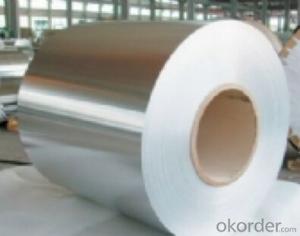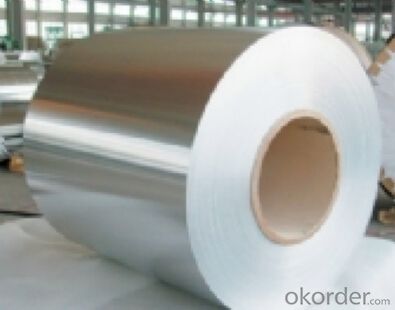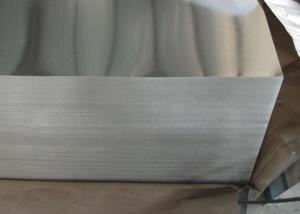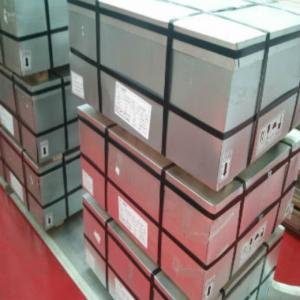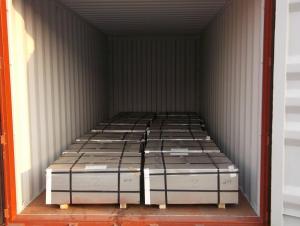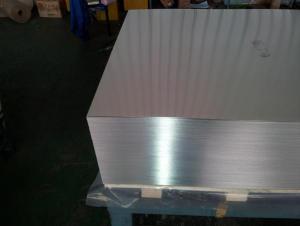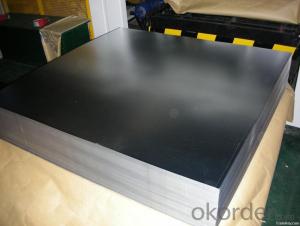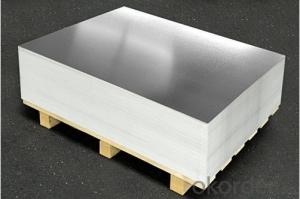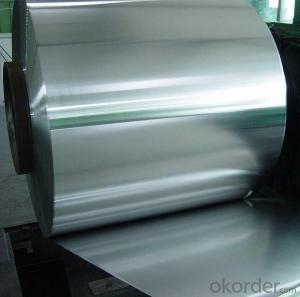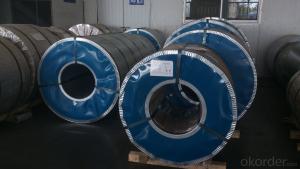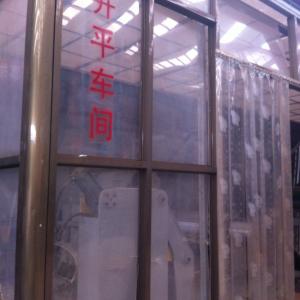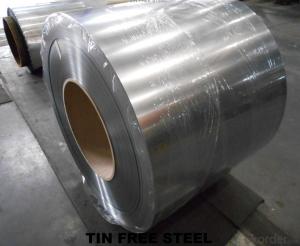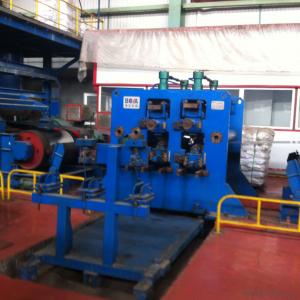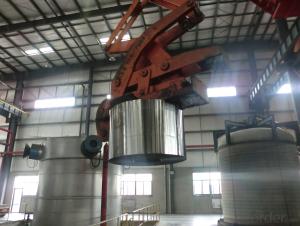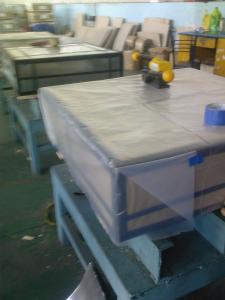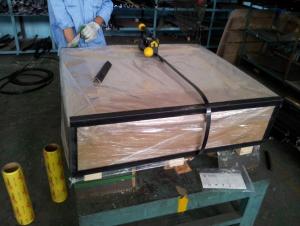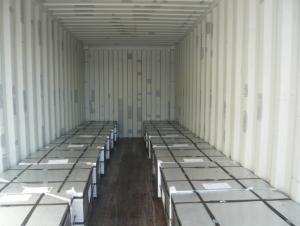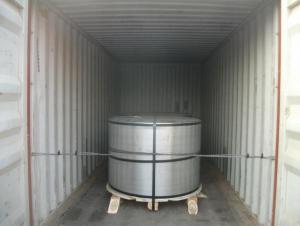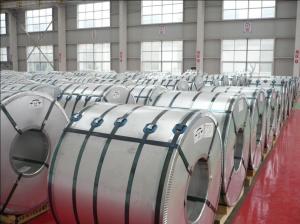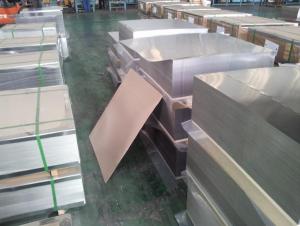Tin Free Steel for Industrial Use in Metal Packaging
- Loading Port:
- China main port
- Payment Terms:
- TT OR LC
- Min Order Qty:
- 25 m.t.
- Supply Capability:
- 30000 m.t./month
OKorder Service Pledge
OKorder Financial Service
You Might Also Like
1. Products: Tin Free Steel
Tinplate and TFS are widely used for making all types of containers such as artistic cans, tea cans, painting cans, chemical package cans and metal printing etc. Its applications are not limited to containers; recently, they have also been used for making electrical machinery parts and many other products.
2. Specification:
Our goods enjoyed high quality both at home and abroad. We can supply tin free steel as follows:
Technical standard | JISG3315 and GB/T24180 - 2009 (BS EN 10202:1990) |
Steel Type | MR / SPCC |
Thickness | From 0.15mm to 0.50mm (Tolerance +/- 0.01mm) |
Width | Normally 600-1050mm (Tolerance +3/-0 mm) |
Coating | Total chromium min 30mg/m2 max 140mg/m2 |
Temper & Annealing | T1-T5, DR7-8, TS230-TH435, T49-T65(+/- 4) |
Surface Treatment | Bright & Fine Stone & Stone & Silver & Matt |
Payment terms | Letter of Credit (L/C), Telegraphic transfer (T/T) |
Price terms | CFR & CIF price term |
Delivery time | Within 60 days after received L/C or T/T down payment |
Packing | High quality shipping packing which contains thin plastic film, rust-proof paper, metal cover, metal angles and strap sand pallet. |
Minimum order Quantity(MOQ) | 25 metric tons (1X 20'' container) |
3. Pictures:
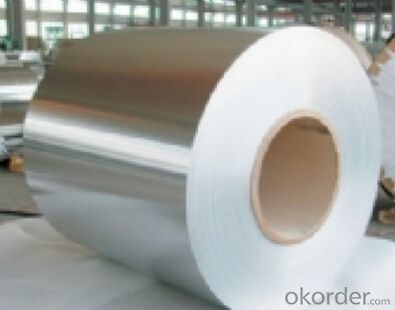
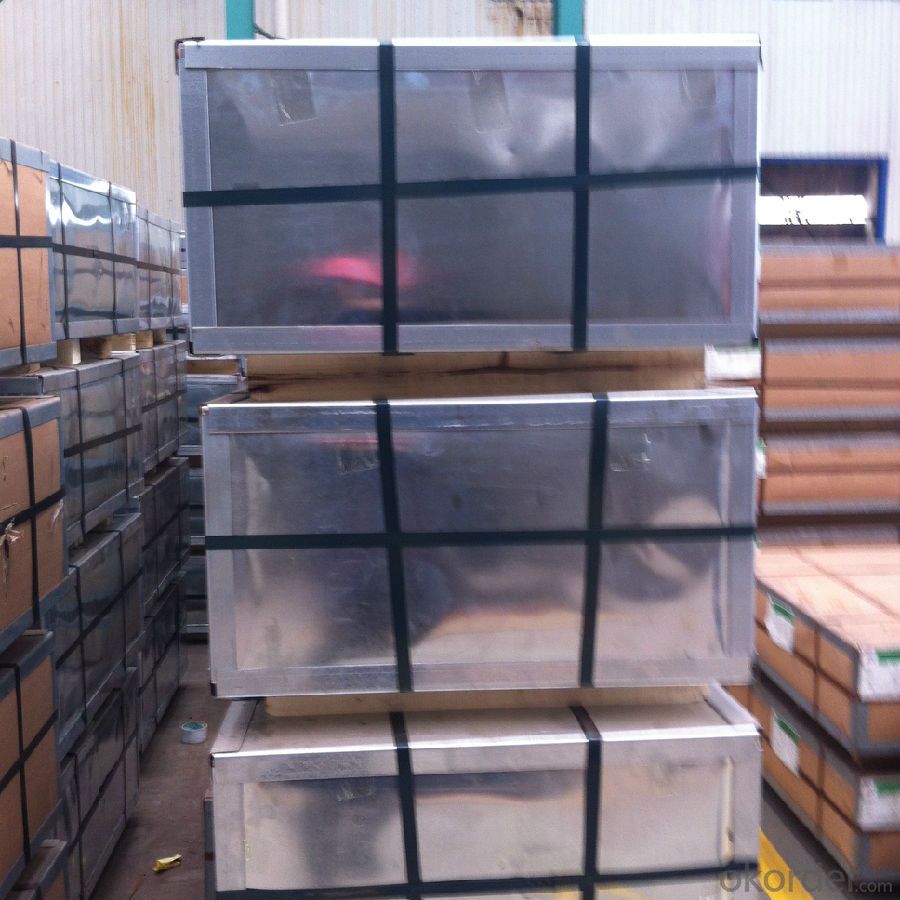
4. Features of the factory price/ tin free steel/tinplate/tfs/tmbp/etp/spte:
Beautiful Appearance
Excellent Paintability & Printability
Excellent Formability & Strength
Excellent Corrosion Resistance
Excellent Solderability & Weldability
5. FAQ:
We are one of the main producers in China for tinplate, tin free steel and also TMBP. At present, our productivity is more than 450000 MT/year.
For more information about our products or company, pls contact us freely.
- Q: How does tinplate perform in terms of heat resistance?
- Tinplate has relatively low heat resistance compared to other metals. It can withstand moderate temperatures without warping or melting, but prolonged exposure to high heat can cause it to lose its shape or even melt.
- Q: How does tinplate contribute to the functionality of household goods?
- Tinplate contributes to the functionality of household goods by providing a durable and corrosion-resistant coating that protects the underlying material from damage and extends the lifespan of the product. Additionally, tinplate's ability to be easily molded into various shapes and sizes allows for the creation of intricate designs and structures, enhancing the aesthetics and functionality of household items.
- Q: How is tinplate coated for toys and games?
- Tinplate is typically coated for toys and games using a process called electrolytic tinning, where the tin is electroplated onto the surface of the tinplate.
- Q: What are the cost considerations of using tinplate packaging?
- The cost considerations of using tinplate packaging include the price of the tinplate material itself, manufacturing and production costs, transportation and storage expenses, as well as potential additional costs for labeling or customization. Additionally, tinplate packaging may require specialized equipment or machinery for production, which could add to the overall costs. However, tinplate packaging offers advantages such as durability, protection against moisture and air, and its recyclability, which can contribute to overall cost savings in terms of product quality, shelf life, and sustainability.
- Q: How does tinplate perform in terms of product protection?
- Tinplate performs exceptionally well in terms of product protection. Its strong and durable nature ensures excellent resistance against corrosion, moisture, and oxygen, thus safeguarding the contents from external elements. Additionally, its ability to provide an airtight seal helps in preserving the product's freshness, flavor, and quality for an extended period. Overall, tinplate is a reliable and efficient packaging material for ensuring optimal product protection.
- Q: What are the common sizes and shapes of tinplate containers?
- Common sizes and shapes of tinplate containers include round cans, rectangular cans, and square cans. These containers can come in various sizes ranging from small tins for spices or cosmetics to larger tins for food products or industrial purposes.
- Q: What are the common closure systems for tinplate containers?
- The common closure systems for tinplate containers include twist-off caps, screw caps, and press-on lids.
- Q: What are the common corrosion protection methods used for tinplate?
- The common corrosion protection methods used for tinplate include electroplating with tin, applying organic coatings such as lacquers or paints, and using barrier coatings like epoxy or acrylic resins.
- Q: What are the limitations of printing on tinplate?
- There are several limitations to printing on tinplate. Firstly, tinplate is not a very smooth surface, which can affect the quality of printed images and text. Additionally, the printing process on tinplate requires specialized inks and equipment, making it more costly and time-consuming compared to printing on other materials. Furthermore, tinplate is prone to scratching and chipping, which can damage the printed design. Lastly, the printing options on tinplate are somewhat limited, as it cannot accommodate intricate or highly detailed designs as well as other printing mediums.
- Q: How does tinplate perform in terms of aroma and flavor preservation?
- Tinplate performs well in terms of aroma and flavor preservation. The tin coating on the steel substrate provides an effective barrier against oxygen, moisture, and light, which helps to preserve the freshness and quality of food or beverages inside the packaging. This ensures that the aroma and flavor of the product are protected and maintained over time.
Send your message to us
Tin Free Steel for Industrial Use in Metal Packaging
- Loading Port:
- China main port
- Payment Terms:
- TT OR LC
- Min Order Qty:
- 25 m.t.
- Supply Capability:
- 30000 m.t./month
OKorder Service Pledge
OKorder Financial Service
Similar products
Hot products
Hot Searches
Related keywords
